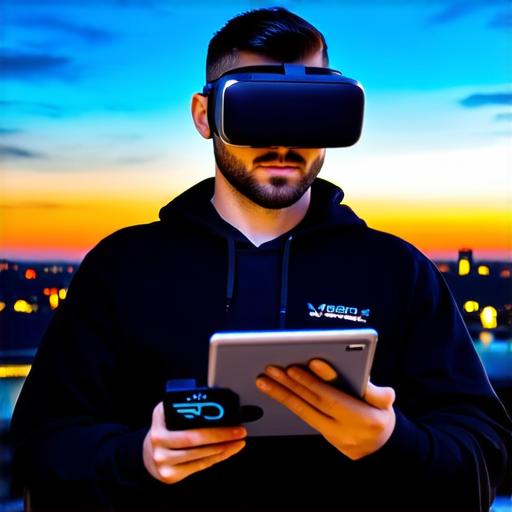
Augmented Reality vs. Virtual Reality: Which Comes Out on Top?
Virtual reality and augmented reality are two emerging technologies that have gained significant traction in recent years. While both are designed to enhance the user’s experience, they differ fundamentally in their approach.
What is Augmented Reality?

Augmented reality is a technology that superimposes digital elements onto the real world. It allows users to interact with virtual objects in their physical environment, creating an immersive experience. AR is typically used for mobile applications or smart glasses, and it requires minimal setup.
Virtual Reality: An Overview
On the other hand, virtual reality is a fully immersive technology that creates a simulated 3D environment for users to interact with. VR requires a head-mounted display (HMD) or headset and typically involves motion controllers. While it provides an incredibly realistic experience, it can be more cumbersome to set up and use than AR.
Which Technology is Right for You?
The choice between AR and VR ultimately depends on the specific needs of the user. If you are looking for a simple, easy-to-use technology that enhances your experience in the real world, then AR is the right choice. However, if you require a fully immersive experience that transports you to another world, then VR is the way to go.
Case Studies and Personal Experiences
One of the most well-known examples of AR in action is Snapchat’s filters. These filters allow users to superimpose digital elements onto their photos or videos, creating a fun and engaging experience. Similarly, IKEA’s augmented reality app allows users to visualize how furniture would look in their home before making a purchase.
Expert Opinions
According to a report by MarketsandMarkets, the augmented reality market is expected to grow from $20.4 billion in 2020 to $161.75 billion by 2025, at a CAGR of 30.2% during the forecast period. This growth is due in part to the increasing demand for AR in industries such as manufacturing, retail, and entertainment.
On the other hand, VR is expected to grow at a faster rate, with a CAGR of 48.9% during the forecast period from 2020 to 2025. This growth is due in part to the increasing adoption of VR in industries such as gaming, education, and healthcare.
Real-Life Examples
One real-life example of AR in action is the use of AR in manufacturing. General Electric (GE) uses AR to help technicians repair jet engines by overlaying digital information onto the physical engine. This allows them to see exactly what they need to do and reduces the likelihood of making mistakes.
In terms of VR, one real-life example is the use of VR in education. Universities are using VR to simulate classroom environments, allowing students to attend lectures from anywhere in the world. This can be particularly useful for students who live far away from their school or have busy schedules.


